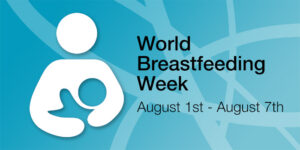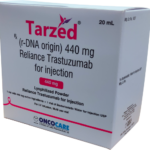Breast Feeding benefits both child and mother. There are a number of natural methods which can help you increase your breast milk supply. WHO recommends that only breast milk should be fed to the baby till the age of 6 months.
In 1991, the World Alliance for Breastfeeding Action (WABA) was formed to act on the Innocent Declaration of 1990 to protect, support, and promote breastfeeding. As part of this action plan, WABA conceptualise global unifying breastfeeding strategy for promotion. A day was suggested to be marked in an international calendar event. And later the idea of celebrating it on a day was turned into a week. And it came to be known as World Breastfeeding Week (WBW) which is celebrated from 1-7 August to commemorate the Innocent Declaration.
In 1992, the first World Breastfeeding Week was celebrated. Now, it is celebrated in more than 100 countries. The theme of World Breastfeeding Week 2020 is “Support breastfeeding for a healthier planet ”. Breastfeeding is important for a child as it provides the best possible start in life. It provides health nutritional and emotional benefits to both mother and children. Also, it makes part of a sustainable food system. Breastfeeding is a natural process and is not always easy. Support to the mothers is required both to get started and to sustain it.


Breast milk is often referred to as ‘liquid gold’
Nature has given humans, in fact all mammals, the ability to breastfeed their helpless new-born. Breast milk is nutritious, wholesome, and free! But breastfeeding is anything but easy. While to some women, breastfeeding seems like a piece of cake, to others it can be a battle. An improper latch, exhaustion from childbirth, etc., can play havoc with a woman’s ability to breastfeed her little one. And even those who have no problem may see the breast milk supply dwindle.
WHO recommends that only breast milk should be fed to the baby till the age of 6 months. But what can one do when their body refuses to cooperate? First of all, do not go on a guilt trip. Your body is not broken! Being a parent is hard and this is just the first hurdle. And we are here to help you clear it! There are a number of natural methods which can help you increase your breast milk supply. Thanks to naturopathy and all other alternate forms of medicine, you can now reach out to the ingredients in your kitchen and increase the breast milk.
Why is breastfeeding important?
For a new baby, breast milk is the best source of nutrition. In breast milk, there are various components that help in protecting babies against infection and disease. Also, the protein present in breast milk is easily digested by the baby rather than in formula or cow’s milk. Also, calcium and iron present in breast milk are more easily absorbed. Therefore, World Breastfeeding Week 2020 campaign focuses on the negative effects of the artificial feeding that pave on the environment and also the way it serves as a drain on natural resources.
Health Benefits of Breastfeeding:
1. Breast milk provides the ideal nutrition for infants. It has a nearly perfect mix of vitamins, protein, and fat everything your baby needs to grow. And it’s all provided in a form more easily digested than infant formula.
2. Breast milk contains antibodies that help your baby fight off viruses and bacteria.
3. Breastfeeding lowers your baby’s risk of having asthma or allergies.
4. Babies who are breastfed exclusively for the first 6 months, have fewer ear infections, respiratory illnesses, and bouts of diarrhoea. They also have fewer hospitalizations and trips to the doctor.
5. Breastfeeding has been linked to higher IQ scores in later childhood in some studies.
6. The physical closeness, skin-to-skin touching, and eye contact all help your baby bond with you and feel secure.
7. Breastfed infants are more likely to gain the right amount of weight as they grow rather than become overweight children.
8. Breastfeeding also plays a role in the prevention of SIDS (sudden infant death syndrome).
9. It’s been thought to lower the risk of diabetes, obesity, and certain cancers as well, but more research is needed.
Breastfeeding Benefits for the Mother
1. Breastfeeding burns extra calories, so it can help you lose pregnancy weight faster.
2. It releases the hormone oxytocin, which helps your uterus return to its pre-pregnancy size and may reduce uterine bleeding after birth.
3. Breastfeeding also lowers your risk of breast and ovarian cancer.
4. It may lower your risk of osteoporosis, too.
5. Since you don’t have to buy and measure formula, sterilize nipples, or warm bottles, it saves you time and money.
6. It also gives you regular time to relax quietly with your new-born as you bond.
7. The benefits of skin-to-skin contact with your baby do not end when you leave the hospital or birthing room. Engaging in a bit of skin-to-skin with your baby daily will help produce more of the hormones that are essentially for milk production and ejection, as well as boost your feel-good endorphins.
Common Reasons for Low Milk Supply in Breastfeeding Mothers:
It is important to first accept that you suffer from lack of proper amount of breast milk production. Secondly, if a woman knows that she is not producing enough milk, then there is no shame in talking about it and looking for a solution. Again, remember, do not feel guilty just because your body is not producing enough milk. There are thousands of new mothers who face a similar type of situation. There can be various reasons that may reduce or lower the production of breast milk in nursing mothers. Following are some of the common reasons that may affect lactation:
1. If you have had breast surgery or you are taking medication that hampers the milk supply.
2. If you are not breastfeeding your baby on a regular basis.
3. If you started breastfeeding your baby late.
4. If you suffer from medical conditions such as diabetes, high blood pressure, obesity, hypothyroidism, etc.
5. If your baby was a premature or preterm baby.
6. Stress, anxiety, and postpartum depression hamper breast milk production.
All these reasons may sometimes cause hindrance in producing enough milk for the baby. However, there are natural ways to boost lactation. First, try and find out whether you are doing it properly or not. Sometimes, your body may have enough breast milk but your child might not be getting enough of it. Try the following small changes and things that you could possibly be doing wrong:
1. Sitting in the right breast feeding position is necessary. While many of us would love to believe that we are doing it right, many first time mothers sit in the wrong position while feeding their new-borns. If you are a first-time mother, this could be a more apparent problem. It is important to talk to your doctor or speak to your attending nurse to know the best way to feed your little one and allow for more milk flow. Speak up and ask, there is no shame in asking how to do things right.
2. You should feed frequently. The best way to improve the production of breast milk and keep it normal is to ensure that you are feeding normally and as frequently as possible. This regulates the milk production in the body and keeps the tissues and mammary glands at work.
3. It is important to drain one breast completely of milk before you let the baby feed from the other one. Nature has worked smartly and given women two breasts for a reason. This is so because the mammary glands work better to produce more milk if the breast is fully drained rather than have a breast with some milk left in it.
4. Drinking enough Liquids is must. It is important to keep your body hydrated to ensure it has enough fluid to produce milk. Drink lots of water and fresh juice to keep your body active. Even when you sit down to feed, keep a bottle of water nearby and keep sipping. It keeps breast milk production at normal levels.


6. Take the much needed rest. You might be a stay-at-home or working mother with a baby at home, but in either case, your body needs rest. With a baby, sleep is available intermittently to mothers. So ensure that you plan and find time for good rest each day. Ask a nanny, husband, parents, or in laws to help you take care of your little one for a certain time of the day to give you some ‘me’ time and a proper allotted rest time during the day.
7. Try to avoid stress. When you think you’re not producing enough breast milk for your baby, you worry and worry equals stress. But stress itself can decrease your milk supply. It’s essential to find ways to minimize stress. For some it’s meditation or prayer, for others it could be reading or listening to music may help.
Natural Remedies To Improve Breast Milk:
If you see no change in your breast milk supply, even after you make all these changes, then try the following home remedies.
1. Fenugreek Seeds : Fenugreek seeds are great for increasing the milk supply in nursing mothers. It has phytoestrogens, similar to oestrogen, which is a hormone that also helps in producing more milk.
“You may take a teaspoon full of fenugreek seeds and boil them in water. Strain the seeds. You may add a teaspoonful of honey and a pinch of turmeric to this to enhance the taste. Drink this tea at least two to three times a day. Mix fenugreek sprouts with salad or veggies as well.”
2. Milk Thistle : This herb is great for removing toxins from the body and works as a great tonic for the liver. Apart from this, this flowering plant has oestrogen which helps to improve lactation.
“You may take milk thistle in the form of capsules (2 to 3 capsules a day) or make tea by adding 1/2 teaspoon of milk thistle in a cup of boiling water and letting it steep for 20 minutes.”
3. Shatavari: This Ayurvedic herb has been in use to overcome lactation problems in women. This herb has galactagogic properties that help increase the production of prolactin and corticoids, which help produce breast milk, which in turn improve lactation and the quality of breast milk too.
“You may take this herb by mixing it in water, or you may also buy Shatavari herbal supplements for increasing breast milk supply.”
4. Cinnamon : Cinnamon is a fragrant herb that enriches the flavours of many culinary dishes. However, for a long time, many breastfeeding mothers who suffer from insufficient milk supply have been using this herb to increase their milk flow. It is also said to enhance the flavour of breast milk.
“By mixing a pinch of cinnamon powder in warm water, half a teaspoon of honey or by adding it to milk. You may take cinnamon for a month or two to see the difference in your breast milk supply.”
5. Cumin Seeds : Cumin seeds are widely used in Indian cooking, and these fragrant seeds are also considered an effective remedy for curing low breast milk supply in mothers. These seeds are also loaded with iron, which is helpful in giving the much-needed energy to a mother.
“Mix a teaspoonful of cumin seeds with some sugar and have this with warm milk before going to bed at night. Season dal, vegetables, salads, or curries with roasted cumin seed powder every day.”
6. Garlic : This is beneficial in increasing the secretion of breast milk. It is also said to enhance the flavour of breast milk if a breastfeeding mother consumes it on a regular basis.
“Garlic can be used in any form in your day to day cooking or you can even eat 2-3 raw cloves of garlic or 5 roasted peeled garlic with palm sugar every day.”
7. Ginger : Apart from adding flavour to various foods and beverages, ginger is also used for its health benefits. One of the best health benefits that you may achieve after consuming this is enhancing your breast milk supply. Ginger has galactagogic properties that can help stimulate the production of breast milk in nursing mothers.
“You may use fresh ginger to spice up your regular tea or in your food preparations. Or simply add dried ginger powder in food, tea, etc.”
8. Anise : This herb has estrogenic properties; it contains Anatole, which is a phytoestrogen. Which helps unblocked clogged milk ducts and increasing breast milk supply.
“You may make tea by infusing a few anise seeds in hot water. Add sugar or honey for taste. You may safely consume two to three cups in a day.”
9. Fennel Seeds : Fresh fennel and its seeds are another food that is often used to promote milk production. Usually you see it as part of the herbal blend used in milk-enhancing teas, but using the fresh bulb in food can also have an effect
“Mix 5 gms of fennel seed powder in a cup of barley water and drink 2 to 3 times a day to increase breast milk.”
10. Almonds: Almonds are chockfull of healthy fats, vitamins and minerals and have a place in any nutritious diet. The high content of phytosterols in this nut can also aid breastmilk production. Snacking on a handful of raw almonds or almond butter made from raw almonds daily, may boost your supply.
11. Onions : Onions can help improve milk flow as well as prevent infection in the mammary glands, like the dreaded mastitis.
12. Spinach and Other Leafy Greens: Leafy greens–particularly spinach–have tons of nutritional properties that are beneficial for breast milk production. Making them a regular part of your diet, can help ensure that you produce sufficiently. Since spinach has lots of iron, it in particular can help moms who suffer from anaemia and consequently decreased milk production.
13. Whole Grains: Healthy whole grains like brown rice and quinoa can help with breast milk production for a number of reasons. When you’re breastfeeding you need to consume plenty of calories to give your body energy to make milk and whole grains are a healthy way to do so. They also contain a decent amount of plant-based proteins which help make milk.
14. Dried Apricots: Dried apricots are said to help balance hormones and are full of fibre and calcium, all of which make them an excellent snack for breastfeeding mothers trying to increase milk supply.
15. Water: Hydration–just as in pregnancy–is absolutely crucial when you’re breastfeeding. You need it to feel your best, but breast milk is made of water, so it’s doubly important when you’re nursing to keep the milk flowing and to keep the quality of the milk high.
16. Green Papaya : In many cultures unripen or green papaya is used to increase breast milk production. It might seem strange to eat the fruit before it’s sweet, but there’s a certain enzyme in the green version that stimulates milk production.
17. Flax Seed Oil : Flax seed oil and other healthy fats like avocado and coconut oils, can be beneficial when trying to increase breast milk supply because of the essential fatty acids they contain. And like I said, you need plenty of calories from healthy sources to keep up milk production. Ground flax also works and can be added to baked goods, smoothies and oatmeal.
18. Moringa : Daily consumption of moringa-an superfood grown in many warm-weather climates–really made a huge impact on breastmilk production. These help the veins and vessels to open up and stimulate the mammary glands. This leads to increased breast milk and easier supply to the breasts.
“The best and most effective manner is to have drumsticks’ juice every day.”
19. Carrots : Carrots are packed with essential vitamins and minerals that are important for overall health, which is incredibly important for breast milk production. It’s suggested that breastfeeding mothers make carrots a regular part of their diet to aid in milk production. They can be eaten raw, cooked or juiced for maximum benefit.
“Drink a glass of carrot juice by mixing 1 tspn of shatavari powder and honey first in the morning”
20. Fish Oils : Fish oils have many benefits, including hydration of the skin, reducing risk of heart disease and stroke, and decreasing risk of cancer. Studies have been done which show babies whose mothers consume OMEGA-3 & DHA-40 during pregnancy and while breastfeeding have children who grow up to have higher IQs later in life. Fish oils are also linked to better cognitive function.
Precautions For Using Herbs:
Though herbs are extremely safe to use, some women may be allergic to some of them. Therefore, you should exercise caution before consuming any herb to cure the problem of low milk supply. Here are some precautions that you may adopt:
1. Make sure you consult your doctor before including any herb in your regular diet.
2. Ensure that you procure herbal supplements from a reputed brand only.
3. Sometimes herbs may cause toxicity. Talk to your lactation consultant or doctor before taking them.
4. In case you are pregnant, taking herbs without consulting your doctor may lead to fatal complications.
5. Avoid the herbs you are allergic to.
Yoga – Healthy Way To Increase Breast Milk:
Sufficient milk flow in the mother can help ensure that her baby is healthy. In fact, practising yoga on a regular basis can be an effective way to get rid of the fat gained during pregnancy. Research has shown that yoga could be a great tool to help you lose weight and reduce stress, among many other benefits. The following yoga poses will not only increase milk production but also help with post-pregnancy weight loss, as well as relieve back and neck pain from breastfeeding. Here are a few simple yoga exercises that young mothers can practice a minimum of 3-4 times a week.
Yoga exercises for breastfeeding mothers:
Nursing moms may start with the practice of Surya Namaskar. Though best practised early morning on an empty stomach, one can perform the Sun Salutation pose any time of the day. Apart from providing the body with a 360-degree workout, the Surya Namaskar also impacts the body and mind positively. The regular practice leaves one feeling energetic, healthy and calm throughout the day.
Padmasana (Lotus position): Formation of the posture
- Sit in Ardha Padmasana with your right foot over your left thigh.
- Lift your left foot and place it on your right thigh facing up.
- Pull your feet closer to your hips.
- Drop your knees to the floor.
- Place your palms on your knees facing up.
- Hold the asana for a while.
- Repeat with the other leg.
Pashimottanasana (Seated forward bend): Formation of the posture
- Begin with Dandasana.
- Ensure that your knees are slightly bent while your legs are stretched out forward.
- Extend your arms upward and keep your spine erect.
- Exhale and empty your stomach of air.
- With the exhale, bend forward at the hip and place your upper body on your lower body.
- Hold your big toes with your fingers.
- Try to touch your forehead to your knees.
- Hold the asana for 10 seconds.
Brahmari Pranayama (Bee breath):
- Sit in any comfortable pose (such as Sukhasan, Ardhapadmasan or Padmasana).
- Straighten your back and close your eyes.
- Place your palms on your knees facing up (in Prapthi Mudra).
- Place your thumbs on the ‘Tragus’, the external flap on your ear.
- Place your index finger on your forehead, your middle finger on the medial canthus (either corner of the eye where the upper and lower eyelids meet) and ring finger on the corner of your nostril.
- Inhale and fill your lungs with air.
- As you exhale, slowly make a buzzing sound like that of a bee, i.e., “mmmmmmm….”
- Keep your mouth closed the entire time and feel the vibration of the sound disseminate throughout your body.
Khanda Pranayama :
- Sit in any comfortable pose (such as Sukhasan, Ardhapadmasan or Padmasana).
- Straighten your back and close your eyes.
- Place your palms on your knees facing up (in Prapthi Mudra).
- As you inhale, divide your breath into two equal parts.
- Without retaining the breath in your lungs, exhale twice.
Duration: You may begin by practising this breathing technique for five minutes a day and gradually increase it with time.
Sthiti Dhyan : This is a meditation technique to help calm your nerves, raise mindfulness and deflect any negative experiences.
- Stand or sit comfortably.
- Be mindful of the surroundings, noises, smells, colours, etc.
- Slowly turn to the right side to gaze and observe, then turn to the left and repeat.
What If Home Remedies Don’t Work?


Avoid These While Breastfeeding:
There are certain things which should be avoided by mothers who are breastfeeding. If a baby is fussy or colicky, it could be because of allergens which the mother is consuming. Things to avoid include wheat, dairy, tomatoes, nuts, and other common allergens. It is also recommended that pregnant and breastfeeding women avoid fish which are high in mercury, such as shark, swordfish, and kingfish, as mercury can be passed along in breast milk.
Also read: BREAST FEED – GIVE HEALTH AND LIVE HEALTHY.


Dr Venkataramana Hegde & Dr.Nandhini V. Mohan
Veda wellness center
Nisarga Mane Sirsi
Uttarakannada District.
Ph: 9448729434 / 9597019032
Email : nisargamane6@gmail.com











